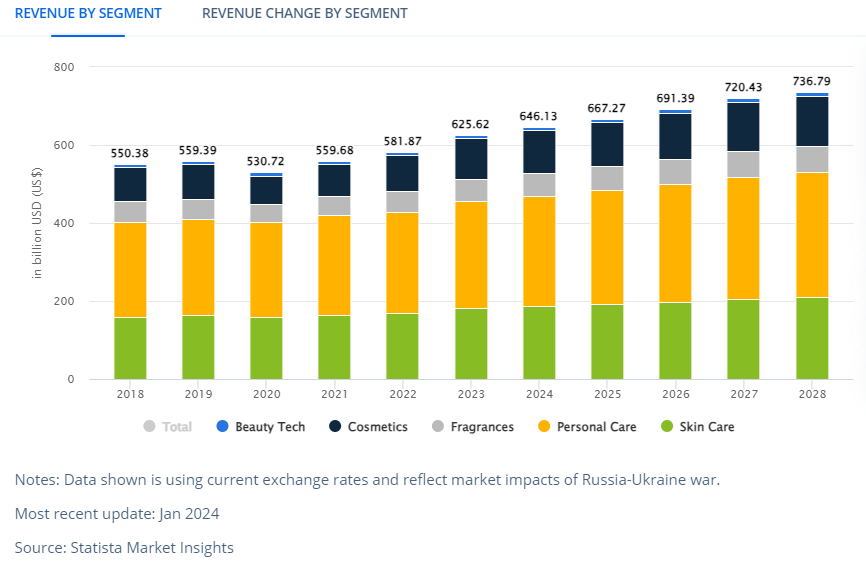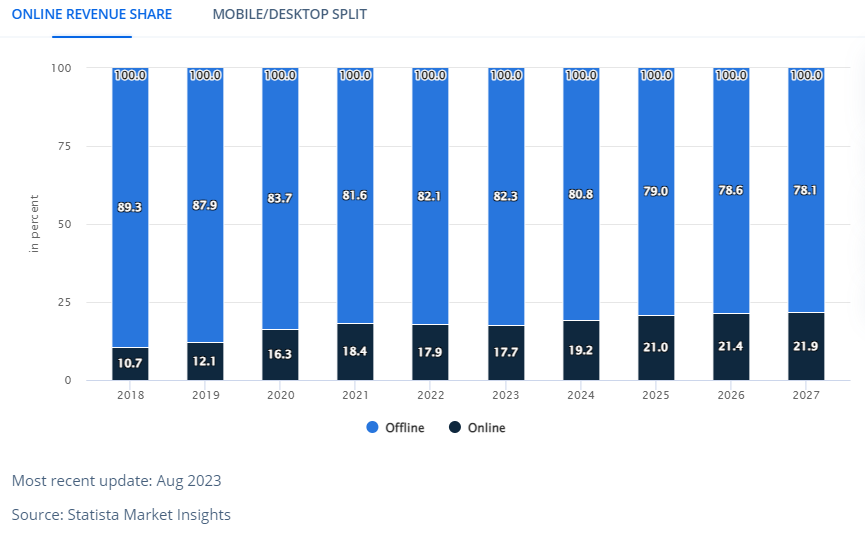The Business of Beauty- The Real Reason Why Your Girlfriend Is Always Late
4 min read

4 min read

by Milica Stankić
Picture this: you’re standing by the door, tapping your foot impatiently, checking your watch for what feels like the hundredth time. Your girlfriend, as lovely as she is, seems to be in a perpetual race against the clock whenever you have plans. Sound familiar? We’ve all been there.
But have you ever stopped to wonder why it seems like women take ages to get ready? It’s not just a matter of vanity or inefficiency. The truth is, there’s a whole industry behind those extra minutes in front of the mirror – and the numbers behind it are no joke. From skincare routines to makeup tutorials, the beauty industry commands a significant influence over how women perceive time.
The worldwide cosmetics market has grown significantly in the last few years, and future development prospects are promising. It is projected that the market will be worth roughly USD 131 billion by 2026. The best revenue of 2023 still holds the United States with USD 98 billion, followed by China with USD 67 billion and Japan with USD 46 billion.

This industry touches the lives of billions globally, and its influence isn’t confined just to product sales; it permeates societal norms, shaping perceptions of beauty on a grand scale. The five primary categories that make up the cosmetics market are skincare, haircare, makeup, perfumes, and hygiene goods.
Just in the past five years, the personal care category has consistently led in revenue generation and is expected to maintain its dominance, with skincare and cosmetics following closely behind. Statista reports that skincare products hold a significant global market share of 41%, with a market value of €25.6 billion in Europe.

Within this colossal industry, marketing tactics reign supreme. Beauty brands craft intricate campaigns that weave narratives of perfection, promising consumers the elusive key to flawlessness. Whether it’s through airbrushed advertisements, celebrities and (nowadays more and more) influencer endorsements, these tactics not only sell products but also construct unattainable beauty standards. The pressure to conform to these ideals drives women to invest more time and resources into their appearance, unintentionally contributing to the phenomenon of being fashionably late.

The majority of beauty market revenue remains offline, but online marketing is rapidly gaining ground. As of 2023, the online revenue share stood at 17.7%, and it’s projected to surge to nearly 22% by 2027. This shift is largely fueled by the pervasive influence of social media platforms like Instagram and TikTok. Serving as both a mirror and magnifying glass for beauty standards, these platforms inundate users with meticulously curated images, fostering a culture of comparison and self-doubt. From #SkinCareRoutine videos to #MakeupTransformation challenges, social media perpetuates narrow beauty ideals, leaving women striving for an unattainable standard. In this digital age, the relentless barrage of filtered perfection significantly shapes women’s self-image and, consequently, their grooming habits.
Considering all these factors, financial stakes, and societal influences at play, it is no wonder that on the daily journey of beauty rituals, each stroke of mascara and dab of moisturizer holds significance. However, what may seem like indulgent pampering to some is, in reality, a carefully orchestrated dance of self-care and presentation that takes time to perfect.
So, the next time you find yourself stressing over your girlfriend’s fashionably late arrival, remember this: her beauty routine isn’t just about self-obsession—it’s a reflection of societal pressures and significant financial investments. Offer her a compliment and appreciate the effort she puts in because, in the end, her commitment to her appearance reflects the lasting impact of the beauty industry.
Beauty & Personal Care – Worldwide – statista.com
Cosmetics market in Europe – statistics & facts – statista.com